#1/15/18
Note
headcanons abt how each cabin behaves at dinner time in the dining pavilion (bc I think each one has its own table) would be an amazing concept! love ur blog
dinner time
an average dinner at camp half-blood



⚡️⋆.ೃ࿔* zeus cabin
are usually the last cabin to get to the dining pavilion so they can make a dramatic entrance
would eventually get mad at cabin 5 for making fun of them for being too extravagant and start an argument with half of the cabins who tried to calm them down.
🦚⋆.ೃ࿔* hera cabin
cabin 2’s table was originally placed next to cabin 1’s one but mr. d moved it to the opposite side of the pavilion to avoid conflicts between these two cabins during dinner.
they’d spend most of the time chatting with cabin 10 and the rest of their dinner would be basically them complaining about the food.
🌊⋆.ೃ࿔* poseidon cabin
they don’t catch so much attention when arriving at the dining pavilion. most of the time they’re too tired to even talk between themselves during dinner because of their training sessions.
just give them 30 seconds to be full of energy again and teaming up with cabin 11 to throw water at mr. d.
💐⋆.ೃ࿔* demeter cabin
they are always the first ones to get there. demeter’s kids like to take flowers to decor the tables and sometimes a few of them bake/cook something to share with their friends.
they are really polite and calm, just trying to eat their dinner in peace and go back to what they were doing.
⚔️⋆.ೃ࿔* ares cabin
they’re usually really loud, especially if they had just won capture the flag, and would make sure to bump into cabin 6’s table and tease them for losing.
i think they’d have childish eating habits, like not liking vegetables and salad. they are the most likely to start a food war at some point too.
🦉⋆.ೃ࿔* athena cabin
the quiet ones who just wants to eat and go back to what they were doing before. is really common for them to take books and notebooks to the dinning pavilion because they “can’t lose time”
chiron don’t let them study in the dinning pavilion anymore because they’d stop eating when their food gets cold because of them getting distracted by their books
🌞⋆.ೃ࿔* apollo cabin
they usually arrive together with another cabin, mostly cabin 11 and 18, laughing and singing.
don’t really care about the rule of not seating in another’s cabin table, and they’d go around all the tables so they can eat with all their friends.
🌙⋆.ೃ࿔* hunters of artemis
when the hunters are in camp half-blood, they are the first ones to arrive and the first ones to leave, rare exceptions.
don’t usually interact with other cabins, and just talk between themselves.
🛠️⋆.ೃ࿔* hephaestus cabin
cabin 9 only go to the dining pavilion to get food to spend the night working and occasionally talk to some of their friends too.
they eat a lot though, and sometimes don’t manage to sneak out of the pavilion without getting caught when they are trying to take some food to their cabin
💘⋆.ೃ࿔* aphrodite cabin
some of them are usually late because they spend too much time getting ready for dinner, but others like talking to cabin 4 while they decor the tables.
they pretend to eat only healthy food but are addicted to desserts and won’t leave without eating something sweet.
📨⋆.ೃ࿔* hermes cabin
the other demigods always try to get to the dining pavilion before cabin 11 because they know that hermes’s children like playing pranks on who is late to dinner.
they also eat a lot because they need a lot of energy to keep up with their training schedule
🍷⋆.ೃ࿔* dionysus cabin
mr d. go to their cabin to check if they getting ready to dinner and then waits until all of his kids arrive to the dining pavilion to start eating.
always try to order wine from that magic cups but they never manage to do it. they get scolded by chiron really often because of that but at some point mr d. transformed him into a frog so he’d stop bothering his kids
☠️⋆.ೃ࿔* hades cabin
i feel like they don’t often have dinner with the others, but sometimes will eat in the dinning pavilion just so everyone knows they’re still there.
when they are not feeling like going to the dinning pavilion, their friends would bring some food for them in cabin 13 and they’d probably have a sleepover after that.
🌈⋆.ೃ࿔* iris cabin
they’re pretty quiet, just go there to say hello to everybody, eat and get some snacks to spend the night or to share with some friends later.
they like playing with the colors of the foods, like changing the food’s color or making it shine.
💤⋆.ೃ࿔* hypnos cabin
they might be a bit lazy but are never going to deny food. when arriving at the dinning pavilion they’d go straight to their friends table to talk a little before the food is served.
they’d never eat their whole meal because they would get tired of chewing at some point.
⚖️⋆.ೃ࿔* nemesis cabin
they have an habit of being the last ones to start eating because they think it’s unfair to have a meal while others are hungry.
would get so mad at people wasting food, or starting silly arguments (cabin 1 x cabin 5)
🏆⋆.ೃ࿔* nike cabin
they’d be either too tired while eating because of the training or would create dumb competitions
they have weird eating habits. i don’t really know how to explain but they eat weird food.
🧸⋆.ೃ࿔* hebe cabin
they are often scolded by cabin 16 for playing with their food or for speaking too loudly.
they’re just want the dessert, nothing else. (chiron won’t let them eat only sweet though)
🍀⋆.ೃ࿔* tyche cabin
never had to face situations like ordering something they don’t like or their food getting cold, because of their luck.
cabin 11 still tries to throw a pie on their faces but it just never works.
🔮⋆.ೃ࿔* hecate cabin
they put potions on the other cabins food sometimes, just to see the effect it’d have in people.
they take some food to the satyrs who live in the woods in exchange for magic ingredients for their studies.
⤷ author’s note:
that’s probably the longest hc i’ve ever written, but i hope you guys enjoy it🫶
(ps: before someone says anything about cabin 2 being here, i just want to say that i decided to include them here because i already made other hc about hera’s children so i thought it was fair to have them here)
#percy jackon and the olympians#percy jackson#heros of olympus#pjo hoo toa#pjo imagine#pjo tv show#rick riordan#riordanverse#jason grace#headcanon#cabin 1#cabin 2#cabin 3#cabin 4#cabin 5#cabin 6#cabin 7#cabin 8#cabin 9#cabin 10#cabin 11#cabin 12#cabin 13#cabin 14#cabin 15#cabin 16#cabi 17#cabin 18#cabin 19#cabin 20
191 notes
·
View notes
Text

This fandom topic is very important to me and infuriating with how it's discussed as an irl person who's got tons of younger friends that they refer to siblings as with eachother and play a parent part to because a lot of them have or had abusive parents-Wether it's shipping the first kind or calling the second pr*ship,y'all are both wrong and dumb as hell.You've never had this type of dynamic with someone in your life,you're not the expert on it you think you are💀The difference is that one's an adult and someone who's either a child compared to them or an actual one and the other is two kids who're two tears apart tops and it's so deeply unserious to act like they're equivalents because something something a teen being mature for their age means they're actually an adult and this is A Progressive Mentality Ackstually.Go OUTSIDE‼️‼️‼️‼️‼️‼️‼️
#'B-BUT JASON/GUS IS AN ADULT NOW AND PERCY ISN'T MUCH OLDER THAN NICO!!!'1.dick and hunter watched them grow up and helped raise them#and 2.literally the last time we saw percy in the current canon timeline she was 18-read:an ADULT and nico's was at 15-read:a CHILD#keep your weird little fantasies out of children's media(and yes wfa specifically is children's media and most batman comics are all ages)#antiproship#antijaydick#antiguster#antipercico#punkflower#legitallurance#kataang#dick grayson#jason todd#hunter noceda-deammone#gus porter#percy jackson#nico di angelo#miles morales#hobie brown#allura#lance vld#aang#katara#batfam#toh#pjo#spiderman#vld#atla geekery#all the characters in this are trans and autistic + percy and dick are transfem specifically(hence the she/her pronouns for percy)#letters from summer
110 notes
·
View notes
Text

A Date to Remember <3
#nyanaknifeart#art#illustrations#welcome home#welcome home puppet show#welcome home arg#welcome home fanart#23 8 1 20 4 15 5 19 5 22 5 18 25 20 8 9 14 7 13 5 1 14 20 8 9 19 12 15 15 11#19 15 6 6 9 6 25 15 21 18 5 19 5 5 9 14 7 20 8 9 19 7 15 15 4 12 21 3 11 6 9 14 4 9 14 7 1 12 12 15 6 9 20
375 notes
·
View notes
Text
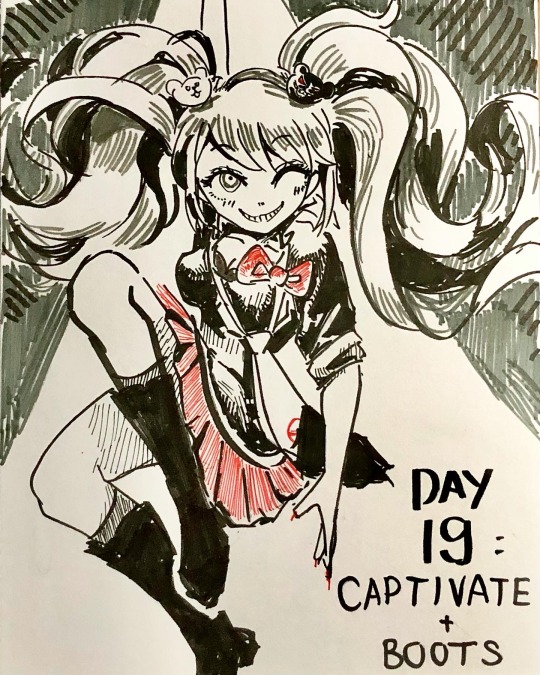
day 19: captivate + boots + moth
“like moths to a flame”
miss enoshima “ultimate despair” junko herself!
#inktober 2023#inktober#junko enoshima#enoshima junko#danganronpa#danganronpa trigger happy havoc#danganronpa 1#danganronpa fanart#i actually dont like junko that much lol#but i love her evil crazy swag#also where is day 15 and 18 you may ask?#oh theyre big BIG projects. please wait w 18!
98 notes
·
View notes
Text

Genesis 18:1-15 (NASB). “Now the LORD appeared to him by the oaks of Mamre, while he was sitting at the tent door in the heat of the day. When he lifted up his eyes and looked, behold, three men were standing opposite him; and when he saw them, he ran from the tent door to meet them and bowed himself to the earth, and said, ‘My Lord, if now I have found favor in Your sight, please do not pass Your servant by. ‘Please let a little water be brought and wash your feet, and rest yourselves under the tree; and I will bring a piece of bread, that you may refresh yourselves; after that you may go on, since you have visited your servant." And they said, ‘So do, as you have said."
So Abraham hurried into the tent to Sarah, and said, ‘Quickly, prepare three measures of fine flour, knead it and make bread cakes." Abraham also ran to the herd, and took a tender and choice calf and gave it to the servant, and he hurried to prepare it. He took curds and milk and the calf which he had prepared, and placed it before them; and he was standing by them under the tree as they ate.
Then they said to him, "Where is Sarah your wife?" And he said, “There, in the tent." He said, ``I will surely return to you at this time next year; and behold, Sarah your wife will have a son.” And Sarah was listening at the tent door, which was behind him.
Now Abraham and Sarah were old, advanced in age; Sarah was past childbearing. Sarah laughed to herself, saying, "After I have become old, shall I have pleasure, my lord being old also?" And the LORD said to Abraham, ‘Why did Sarah laugh, saying, ‘Shall I indeed bear a child, when I am so old?' “Is anything too difficult for the LORD? At the appointed time I will return to you, at this time next year, and Sarah will have a son." Sarah denied it however, saying, “I did not laugh"; for she was afraid. And He said, "No, but you did laugh."
“Laughing at the Impossible” By In Touch Ministries:
“God is able to do far more in your life than you can possibly imagine.”
“Sarah was approaching age 90 when she overheard a mysterious visitor tell her husband that she’d give birth to her first child in a year’s time. Sarah thought she was alone and unseen when she laughed in disbelief, but God revealed to Abraham how she’d reacted (Gen. 18:13-15). Sarah tried denying it, but the exchange emphasizes that nothing—not even a weary laugh—is hidden from God.
In fact, it wasn’t the first time Sarah had heard this promise. God had previously told her nearly century-old husband that she would give birth and the boy’s name would be Isaac (Genesis 17:15-22). Abraham had fathered one child, Ishmael, with Sarah’s Egyptian maid Hagar. But now God was saying the son born to Sarah in her old age would be heir to an earlier promise: that Abraham would be the father of a great nation (Genesis 12:2-3).
Sarah’s disbelief did not disqualify her from receiving the miraculous blessing God promised—and which the mysterious visitor had described with such clarity. God’s plans were far greater than her very understandable doubts. And after Sarah’s lifetime of infertility, her pregnancy would drive home an important lesson: Our supernatural God isn’t limited by what we label as “impossible.”
[Photo by Muhamad Rizal Firmansyah at Unsplash].
#genesis 18:1-15#god of the impossible#god loves you#bible verses#bible truths#bible scriptures#bible quotes#bible study#studying the bible#the word of god#christian devotionals#daily devotions#bible#christian blog#god#belief in god#faith in god#jesus#belief in jesus#faith in jesus#christian prayer#christian life#christian living#christian faith#christian inspiration#christian encouragement#christian motivation#christianity#christian quotes#in touch ministries
61 notes
·
View notes
Text
cabin headcanons masterlist
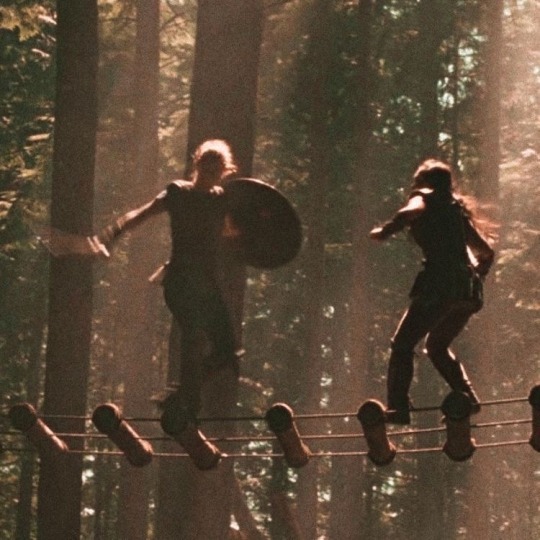
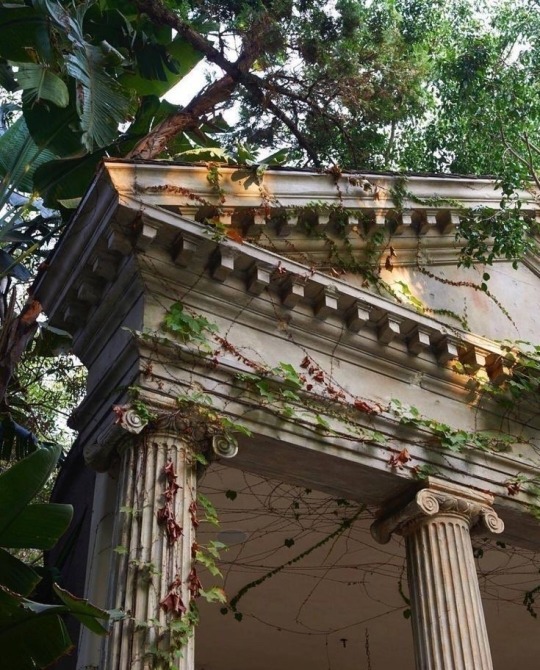
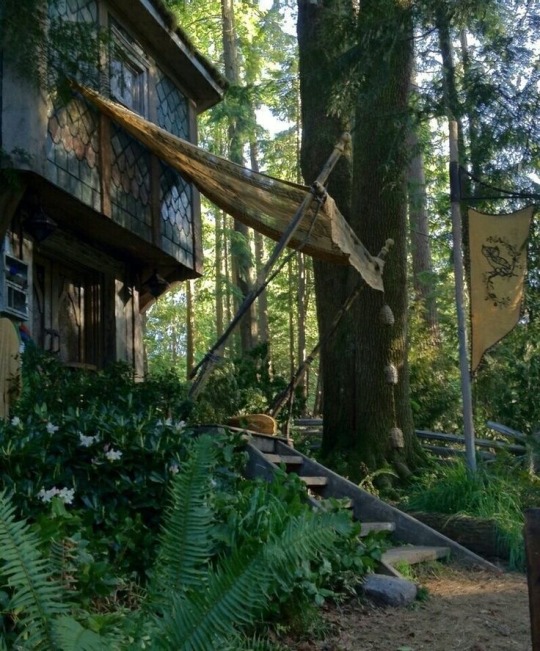
a/n: these are all my personal headcanons. i will be making ones for more minor gods.
cabin 1- zeus ⚡️
cabin 3- poseidon 🌊
cabin 4- demeter 🪴
cabin 5- ares ⚔️
cabin 6- athena 🧠
cabin 7- apollo ☀️
cabin 9- hephaestus ⚙️
cabin 10- aphrodite 💗
cabin 11- hermes ⚕️
cabin 12- dionysus 🍷
cabin 13- hades ☠️
cabin 14- iris 🌈
cabin 15- hypnos 💤
cabin 16- nemesis 🔪
cabin 17- nike 🏆
cabin 18- hebe 🍶
cabin 19- tyche 🎰
cabin 20- hecate 🪄
cabin 21- hestia 🔥
#percy jackson and the olympians#heroes of olympus#pjo#hoo#pjo hoo toa#pjo fandom#hoo fandom#hoo series#pjo series#pjo tv show#pjo disney+#pjo cabins#cabin 1#cabin 3#cabin 4#cabin 5#cabin 6#cabin 7#cabin 9#cabin 10#cabin 11#cabin 12#cabin 13#cabin 14#cabin 15#cabin 16#cabin 17#cabin 18#cabin 19#cabin 20
43 notes
·
View notes
Note
And ofc if you're up for it, one dealer's choice please! Happy WW my friend!
WIP Wednesday 10/18/23 (Closed) | Dealer's Choice: Pretty Boy
Neil huffs out a laugh, "I don't think another scar on my face'll really matter." He says squeezing Andrew's hand in his own, "Can't make me look any worse." Neil says with an amused snort.
Andrew stiffens at the comment.
His brows furrow. What in the world did that mean?
However, before he can say anything they are arriving at the hospital and Neil's being carted out of the ambulance and into the hospital. Andrew sticks next to Neil as much as he can as Neil is carted around and poked out by various medical professionals. Medical professionals who all seem to quickly realize that Neil is far easier to deal with if Andrew is there.
< PREV | FIRST | NEXT >
#FIC: Pretty Boy#AFTG#AFTG Fic#Andreil#10-18-23 WIP Wednesday#WIP Wednesday Ask game#Pretty Boy - Chapter 1 - 15#41
57 notes
·
View notes
Text
Favourite Episode Masterlist
#tma#the magnus archives#tma poll#tma season 1#tma season one#tma 11#tma 12#tma 13#tma 14#tma 15#tma 16#tma 17#tma 18#tma 19#tma 20#magpod
24 notes
·
View notes
Text



#pernille harder#fcb frauen#bayern munich frauen#bayern munich v fortuna sittard#september 1 2023#preseason 2023#pernille gifs#pernille harder goals#15:18
103 notes
·
View notes
Text
Cancelled Missions: NASA's October 1977 Space Shuttle Flight Itinerary
"Soon after President Richard Nixon gave his blessing to the Space Shuttle Program on January 5, 1972, NASA scheduled its first orbital flight for 1977, then for March 1978. By early 1975, the date had slipped to March 1979. Funding shortfalls were to blame, as were the daunting engineering challenges of developing the world's first reusable orbital spaceship based on 1970s technology. The schedule slip was actually worse than NASA let on: as early as January 32, 1975, an internal NASA document (marked 'sensitive') gave a '90% probability date' for the first Shuttle launch of December 1979.
In October 1977, Chester Lee, director of Space Transportation System (STS) Operations at NASA Headquarters, distributed the first edition of the STS Flight Assignment Baseline, a launch schedule and payload manifest for the first 16 operational Shuttle missions. The document was in keeping with NASA's stated philosophy that reusable Shuttle Orbiters would fly on-time and often, like a fleet of cargo airplanes. The STS Utilization and Operations Office at NASA's Johnson Space Center (JSC) in Houston had prepared the document, which was meant to be revised quarterly as new customers chose the Space Shuttle as their cheap and reliable ride to space.
The JSC planners assumed that six Orbital Flight Test (OFT) missions would precede the first operational Shuttle flight. The OFT flights would see two-man crews (Commander and Pilot) put Orbiter Vehicle 102 (OV-102) through its paces in low-Earth orbit. The planners did not include the OFT schedule in their document, but the May 30, 1980 launch date for their first operational Shuttle mission suggests that they based their flight schedule on the March 1979 first OFT launch date.
Thirteen of the 16 operational flights would use OV-102 and three would use OV-101. NASA would christen OV-102 Columbia in February 1979, shortly before it rolled out of the Rockwell International plant in Palmdale, California.
As for OV-101, its name was changed from Constitution to Enterprise in mid-1976 at the insistence of Star Trek fans. Enterprise flew in Approach and Landing Test (ALT) flights at Edwards Air Force Base in California beginning on February 15, 1977. ALT flights, which saw the Orbiter carried by and dropped from a modified 747, ended soon after the NASA JSC planners released their document.
The first operational Space Shuttle mission, Flight 7 (May 30 - June 3, 1980), would see Columbia climb to a 225-nautical-mile (n-mi) orbit inclined 28.5° relative to Earth's equator (unless otherwise stated, all orbits are inclined at 28.5°, the latitude of Kennedy Space Center in Florida). The delta-winged Orbiter would carry a three-person crew in its two-deck crew compartment and the bus-sized Long Duration Exposure Facility (LDEF) in its 15-foot-wide, 60-foot-long payload bay.
Columbia would also carry a 'payload of opportunity' - that is, an unspecified payload. The presence of a payload of opportunity meant that the flight had available excess payload weight capacity. Payload mass up would total 27,925 pounds. Payload mass down after the Remote Manipulator System (RMS) arm hoisted LDEF out of Columbia's payload bay and released it into orbit would total 9080 pounds.

A page from the STS Flight Assignment Baseline document of October 1977 shows payloads and other features of the first five operational Space Shuttle missions plus Flight 12/Flight 12 Alternate
During Flight 8 (July 1-3, 1980), Columbia would orbit 160 n mi above the Earth. Three astronauts would release two satellites and their solid-propellant rocket stages: Tracking and Data Relay Satellite-A (TDRS-A) with a two-stage Interim Upper Stage (IUS) and the Satellite Business Systems-A (SBS-A) commercial communications satellite on a Spinning Solid Upper Stage-Delta-class (SSUS-D).
Prior to release, the crew would spin the SBS-A satellite about its long axis on a turntable to create gyroscopic stability and raise TDRS-A on a tilt-table. After release, their respective solid-propellant stages would propel them to their assigned slots in geostationary orbit (GEO), 19,323 n mi above the equator. Payload mass up would total 51,243 pounds; mass down, 8912 pounds, most of which would comprise reusable restraint and deployment hardware for the satellites.
The TDRS system, which would include three operational satellites and an orbiting spare, was meant to trim costs and improve communications coverage by replacing most of the ground-based Manned Space Flight Network (MSFN). Previous U.S. piloted missions had relied on MSFN ground stations to relay communications to and from the Mission Control Center (MCC) in Houston. Because spacecraft in low-Earth orbit could remain in range of a given ground station for only a few minutes at a time, astronauts were frequently out of contact with the MCC.
On Flight 9 (August 1-6, 1980), Columbia would climb to a 160-n-mi orbit. Three astronauts would deploy GOES-D, a National Oceanic and Atmospheric Administration (NOAA) weather satellite, and Anik-C/1, a Canadian communications satellite. Before release, the crew would raise the NOAA satellite and its SSUS-Atlas-class (SSUS-A) rocket stage on the tilt-table and spin up the Anik-C/1-SSUS-D combination on the turntable. In addition to the two named satellites, NASA JSC planners reckoned that Columbia could carry a 14,000-pound payload of opportunity. Payload mass up would total 36,017 pounds; mass down, 21,116 pounds.
Following Flight 9, NASA would withdraw Columbia from service for 12 weeks to permit conversion from OFT configuration to operational configuration. The JSC planners explained that the conversion would be deferred until after Flight 9 to ensure an on-time first operational flight and to save time by combining it with Columbia's preparations for the first Spacelab mission on Flight 11. The switch from OFT to operational configuration would entail removal of Development Flight Instrumentation (sensors for monitoring Orbiter systems and performance); replacement of Commander and Pilot ejection seats on the crew compartment upper deck (the flight deck) with fixed seats; power system upgrades; and installation of an airlock on the crew compartment lower deck (the mid-deck).
Flight 10 (November 14-16, 1980) would be a near-copy of Flight 8. A three-person Columbia crew would deploy TDRS-B/IUS and SBS-B/SSUS-D into a 160-n-mi-high orbit. The rocket stages would then boost the satellites to GEO. Cargo mass up would total 53,744 pounds; mass down, 11,443 pounds.
Flight 11 (December 18-25, 1980) would see the orbital debut of Spacelab. Columbia would orbit Earth 160 n mi high at 57° of inclination. NASA and the multinational European Space Research Organization (ESRO) agreed in August 1973 that Europe should develop and manufacture Spacelab pressurized modules and unpressurized pallets for use in the Space Shuttle Program. Initially dubbed the 'sortie lab,' Spacelab would operate only in the Orbiter payload bay; it was not intended as an independent space station, though many hoped that it would help to demonstrate that an Earth-orbiting station could be useful.
ESRO merged with the European Launcher Development Organization in 1975 to form the European Space Agency (ESA). Columbia's five-person crew for Flight 11 would probably include scientists and at least one astronaut from an ESA member country.
Flight 12 (January 30 - February 1, 1981), a near-copy of Flights 8 and 10, would see Columbia's three-person crew deploy TDRS-C/IUS and Anik-C/2/SSUS-D into 160-n-mi-high orbit. Payload mass up would total 53,744 pounds; mass down, 11,443 pounds.
JSC planners inserted an optional 'Flight 12 Alternate' (January 30 - February 4, 1981) into their schedule which, if flown, would replace Flight 12. Columbia would orbit 160 n mi above the Earth. Its three-person crew would deploy Anik-C/2 on a SSUS-D stage. The mission's main purpose, however, would be to create a backup launch opportunity for an Intelsat V-class satellite already scheduled for launch on a U.S. Atlas-Centaur or European Ariane I rocket. An SSUS-A stage would boost the Intelsat V from Shuttle orbit to GEO.
NASA JSC assumed that, besides the satellites, stages, and their support hardware, Columbia would for Flight 12 Alternate tote an attached payload of opportunity that would need to operate in space for five days to provide useful data (hence the mission's planned duration). Payload mass up would total 37,067 pounds; mass down, 17,347 pounds.

Space Shuttle Flights 13 through 18 would include the first orbital mission of the OV-101 Enterprise (Flight 17), during which astronauts would retrieve the LDEF payload deployed during Flight 7.
Flight 13 (March 3-8, 1981) would see three astronauts on board Columbia release NOAA's GOES-E satellite attached to an SSUS-D stage into a 160-n-mi-high orbit. OV-102 would have room for two payloads of opportunity: one attached at the front of the payload bay and one deployed from a turntable aft of the GOES-E/SSUS-D combination. Payload mass up would total 38,549 pounds; mass down, 23,647 pounds.
Flight 14 would last 12 days, making it the longest described in the STS Flight Assignment Baseline document. Scheduled for launch on April 7, 1981, it would carry a 'train' of four unpressurized Spacelab experiment pallets and an 'Igloo,' a small pressurized compartment for pallet support equipment. The Igloo, though pressurized, would not be accessible to the five-person crew. OV-102 would orbit 225 n mi high at an inclination of 57°. Mass up would total 31,833 pounds; mass down, 28,450 pounds.
Flight 15 (May 13-15, 1981) would be a near-copy of Flights 8, 10, and 12. OV-102 would transport to orbit a payload totaling 53,744 pounds; payload mass down would total 11,443 pounds. The JSC planners noted the possibility that none of the potential payloads for Flight 15 — TDRS-D and SBS-C or Anik-C/3 — would need to be launched as early as May 1981. TDRS-D was meant as an orbiting spare; if the first three TDRS operated as planned, its launch could be postponed. Likewise, SBS-C and Anik-C/3 were each a backup for the previously launched satellites in their series.
Flight 16 (June 16-23, 1981) would be a five-person Spacelab pressurized module flight aboard OV-102 in 160-n-mi-high orbit. Payloads of opportunity totaling about 18,000 pounds might accompany the Spacelab module; for planning purposes, a satellite and SSUS-D on a turntable behind the module was assumed. Payload mass up would total 35,676 pounds; mass down, 27,995 pounds.
Flight 17, scheduled for July 16-20, 1981, would see the space debut of Enterprise and the retrieval of the LDEF released during Flight 7. OV-101 would climb to a roughly 200-n-mi-high orbit (LDEF's altitude after 13.5 months of orbital decay would determine the mission's precise altitude).
Before rendezvous with LDEF, Flight 17's three-man crew would release an Intelsat V/SSUS-A and a satellite payload of opportunity. After the satellites were sent on their way, the astronauts would pilot Enterprise to a rendezvous with LDEF, snare it with the RMS, and secure it in the payload bay. Mass up would total 26,564 pounds; mass down, 26,369 pounds.
For Flight 18 (July 29-August 5, 1981), Columbia would carry to a 160-n-mi-high orbit a Spacelab pallet dedicated to materials processing in the vacuum and microgravity of space. The three-person flight might also include the first acknowledged Department of Defense (DOD) payload of the Space Shuttle Program, a U.S. Air Force pallet designated STP-P80-1. JSC called the payload 'Planned' rather than 'Firm' and noted somewhat cryptically that it was the Teal Ruby experiment 'accommodated from OFT [Orbital Flight Test].'
The presence of the Earth-directed Teal Ruby sensor payload would account for Flight 18's planned 57° orbital inclination, which would take it over most of Earth's densely populated areas. Payload mass up might total 32,548 pounds; mass down, 23,827 pounds.

Space Shuttle Flights 20 through 23 would include the first mission to make use of an OMS kit to increase its orbital altitude (Flight 21), the first European Space Agency-sponsored Spacelab mission (Flight 22), and the launch of the Jupiter Orbiter and Probe spacecraft (Flight 23)
Flight 19 (September 2-9, 1981) would see five Spacelab experiment pallets fill Columbia's payload bay. Five astronauts would operate the experiments, which would emphasize physics and astronomy. The Orbiter would circle Earth in a 216-n-mi-high orbit. Payload mass up would total 29,214 pounds; mass down, 27,522 pounds.
Flight 20 (September 30-October 6, 1981), the second Enterprise mission, would see five astronauts conduct life science and astronomy experiments in a 216-n-mi-high orbit using a Spacelab pressurized module and an unpressurized pallet. JSC planners acknowledged that the mission's down payload mass (34,248 pounds) might be 'excessive,' but noted that their estimate was 'based on preliminary payload data.' Mass up would total 37,065 pounds.
On Flight 21, scheduled for launch on October 14, 1981, Columbia would carry the first Orbital Maneuvering System (OMS) Kit at the aft end of its payload bay. The OMS Kit would carry enough supplemental propellants for the Orbiter's twin rear-mounted OMS engines to perform a velocity change of 500 feet per second. This would enable OV-102 to rendezvous with and retrieve the Solar Maximum Mission (SMM) satellite in a 300-n-mi-high orbit.
Three astronauts would fly the five-day mission, which would attain the highest orbital altitude of any flight in the STS Flight Assignment Baseline document. JSC planners noted that the Multi-mission Modular Spacecraft (MMS) support hardware meant to carry SMM back to Earth could also transport an MMS-type satellite into orbit. Payload mass up would total 37,145 pounds; mass down, 23,433 pounds.
On Flight 22 (November 25 - December 2, 1981), Enterprise might carry an ESA-sponsored Spacelab mission with a five-person crew, a pressurized lab module, and a pallet to a 155-to-177-n-mi orbit inclined at 57°. Payload mass up might total 34,031 pounds; mass down, 32,339 pounds.
During Flight 23 (January 5-6, 1982), the last described in the STS Flight Assignment Baseline document, three astronauts would deploy into a 150-to-160-n-mi-high orbit the Jupiter Orbiter and Probe (JOP) spacecraft on a stack of three IUSs. President Jimmy Carter had requested new-start funds for JOP in his Fiscal Year 1978 NASA budget, which had taken effect on October 1, 1977. Because JOP was so new when they prepared their document, JSC planners declined to estimate up/down payload masses.
Flight 23 formed an anchor point for the Shuttle schedule because JOP had a launch window dictated by the movements of the planets. If the automated explorer did not leave for Jupiter between January 2 and 12, 1982, it would mean a 13-month delay while Earth and Jupiter moved into position for another launch attempt.
Almost nothing in the October 1977 STS Flight Assignment Baseline document occurred as planned. It was not even updated quarterly; no update had been issued as of mid-November 1978, by which time the target launch dates for the first Space Shuttle orbital mission and the first operational Shuttle flight had slipped officially to September 28, 1979 and February 27, 1981, respectively.
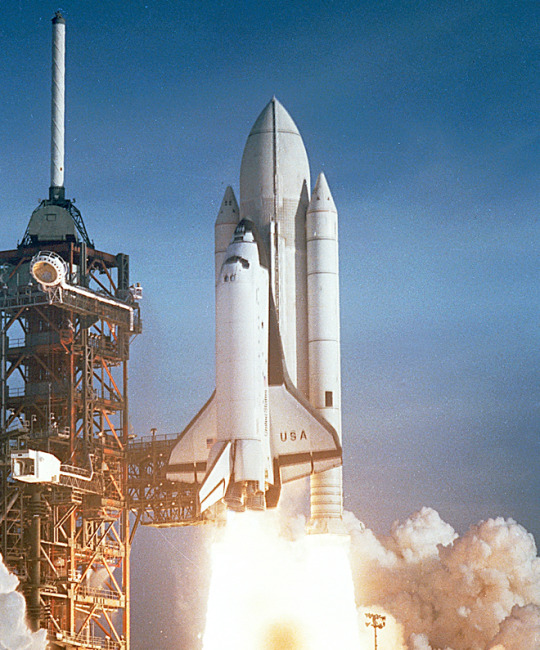
The Space Shuttle Orbiter Columbia lifts off at the start of STS-1.
The first Shuttle flight, designated STS-1, did not in fact lift off until April 12, 1981. As in the STS Flight Assignment Baseline document, OV-102 Columbia performed the OFT missions; OFT concluded, however, after only four flights. After the seven-day STS-4 mission (June 27 - July 4, 1982), President Ronald Reagan declared the Shuttle operational.
The first operational flight, also using Columbia, was STS-5 (November 11-16, 1982). The mission launched SBS-3 and Anik-C/3; because of Shuttle delays, the other SBS and Anik-C satellites planned for Shuttle launch had already reached space atop expendable rockets.
To the chagrin of many Star Trek fans, Enterprise never reached space. NASA decided that it would be less costly to convert Structural Test Article-099 into a flight-worthy Orbiter than to refit Enterprise for spaceflight after the ALT series. OV-099, christened Challenger, first reached space on mission STS-6 (April 4-9, 1983), which saw deployment of the first TDRS satellite.
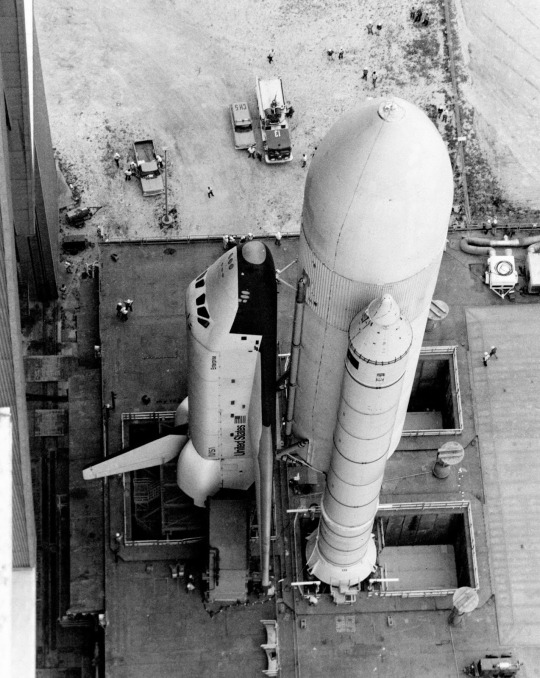
NASA put OV-101 Enterprise to work in a variety of tests and rehearsals (such as the 'fit check' shown in the image above), but did not convert it into a spaceflight-worthy Orbiter.
The voluminous Spacelab pressurized module first reached orbit on board Columbia on mission STS-9 (November 28- December 8,1983). The 10-day Spacelab 1 mission included ESA researcher Ulf Merbold and NASA scientist-astronauts Owen Garriott and Robert Parker. Garriott, selected to be an astronaut in 1965, had flown for 59 days on board the Skylab space station in 1973. Parker had been selected in 1967, but STS-9 was his first spaceflight.
The 21,500-pound LDEF reached Earth orbit on board Challenger on STS-41C, the 11th Space Shuttle mission (April 6-13, 1984). During the same mission, astronauts captured, repaired, and released the SMM satellite, which had reached orbit on 14 February 1980 and malfunctioned in January 1981. Challenger reached SMM without an OMS kit; in fact, no OMS kit ever reached space.
STS Flight Assignment Baseline document assumed that 22 Shuttle flights (six OFT and 16 operational) would occur before January 1982. In fact, the 22nd Shuttle flight did not begin until October 1985, when Challenger carried eight astronauts and the West German Spacelab D1 into space (STS-61A, October 30 - November 6, 1985). Three months later (28 January 1986), Challenger was destroyed at the start of STS-51L, the Shuttle Program's 25th mission.
In addition to seven astronauts — NASA's first in-flight fatalities — Challenger took with it TDRS-B, NASA's second TDRS satellite. The Shuttle would not fly again until September 1988 (STS-26, September 29 - October 3, 1988). On that mission, OV-103 Discovery deployed TDRS-C. The TDRS system would not include the three satellites necessary for global coverage until TDRS-D reached orbit on board Discovery on mission STS-29 (13-18 March 1989).
Following the Challenger accident, NASA abandoned — though not without some resistance — the pretense that it operated a fleet of cargo planes. The space agency had at one time aimed for 60 Shuttle flights per year; between 1988 and 2003, the Shuttle Program managed about six per year. The most flights the Shuttle fleet accomplished in a year was nine in 1985.
Shuttle delays meant that JOP, renamed Galileo, missed its early January 1982 launch window. It was eventually rescheduled for May 1986, but the Challenger accident intervened. Galileo finally left Earth orbit on 18 October 1989 following deployment from OV-104 Atlantis during STS-34 (October 18-23, 1989).
Between the time JOP/Galileo received its first funding and the Challenger explosion, NASA, the White House, and Congress had sparred over how the Jupiter spacecraft would depart Earth orbit. Eventually, they settled on the powerful liquid-propellant Centaur-G' rocket stage.
Citing new concern for safety following Challenger, NASA canceled Centaur G'. Galileo had to rely on the less-powerful IUS, which meant that it could not travel directly to Jupiter; it had instead to perform gravity-assist flybys of Venus and Earth to reach its exploration target. Galileo did not reach the Jupiter system until December 1995.
LDEF had been scheduled for retrieval in March 1985, less than a year after deployment, but flight delays and the Challenger accident postponed its return to Earth by nearly six years. On mission STS-32 (January 9-20, 1990), astronauts on board Columbia retrieved LDEF, the orbit of which had decayed to 178 n mi. LDEF remains the largest object ever retrieved in space and returned to Earth.
During reentry at the end of mission STS-107 (16 January-1 February 2003), Columbia broke apart over northeast Texas, killing its international crew of seven astronauts. This precipitated cancellation of the Space Shuttle Program by President George W. Bush, who announced his decision on 14 January 2004.
The end of the Space Shuttle Program was originally scheduled for 2010, immediately following the planned completion of the International Space Station. In the event, STS-135, the final Space Shuttle mission, took place four years ago (July 2011), three months after the 30th anniversary of STS-1. The Orbiter Atlantis lifted off on 8 July with a four-person crew — the smallest since STS-6. It docked with the International Space Station to deliver supplies and spares and landed in Florida 13 days later."
Article by David S. F. Portree: link
source, source
NASA ID: S77-5784, S77-5785, S77-5758
#STS-1#STS-2#STS-3#STS-4#STS-5#STS-6#STS-7#STS-8#STS-9#STS-10#STS-11#STS-12#STS-13#STS-14#STS-15#STS-16#STS-17#STS-18#STS-19#STS-20#STS-21#STS-22#STS-23#Space Shuttle Columbia#Columbia#OV-102#Space Shuttle Enterprise#Enterprise#OV-101#cancelled
29 notes
·
View notes
Text


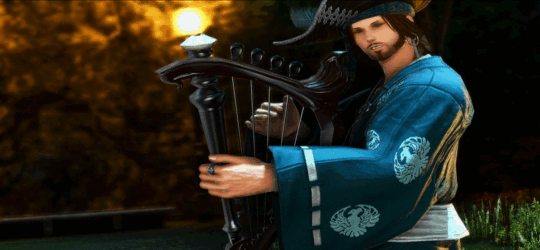
[Insight]:悪 Sheik Sphere🎼
Everything thou know dearest, is but a story.
#We are Tales#Minstrel#Insights#Sheik Sphere#1 out of 26#1-21-20-8-15-18#FFXIV#Final Fantasy XIV#Screenshots#Gif#~insights~
40 notes
·
View notes
Text
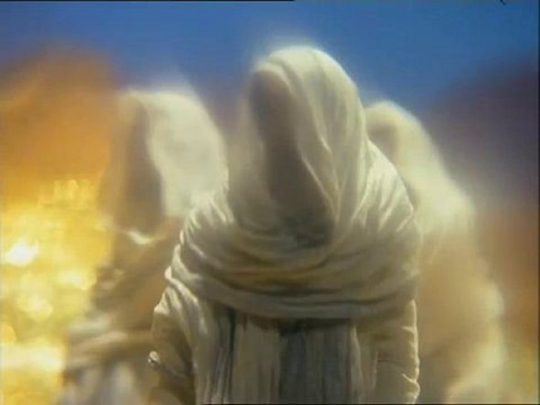
Three Visitors to Abraham
1 And the LORD appeared unto him in the plains of Mamre, as he sat in the tent door in the heat of the day.
2 And he lifted up his eyes and looked, and lo, three men stood by him. And when he saw them, he ran to meet them from the tent door, and bowed himself toward the ground
3 and said, "My lord, if now I have found favor in thy sight, pass not away, I pray thee, from thy servant.
4 Let a little water, I pray you, be fetched, and wash your feet and rest yourselves under the tree;
5 and I will fetch a morsel of bread and comfort ye your hearts. After that ye shall pass on, for therefor are ye come to your servant." And they said, "So do, as thou hast said."
6 And Abraham hastened into the tent unto Sarah, and said, "Make ready quickly three measures of fine meal, knead it, and make cakes upon the hearth."
7 And Abraham ran unto the herd and fetched a calf, tender and good, and gave it unto a young man, and he hastened to dress it.
8 And he took butter and milk and the calf which he had dressed, and set it before them; and he stood by them under the tree, and they ate.
9 And they said unto him, "Where is Sarah thy wife?" And he said, "Behold, in the tent."
10 And he said, "I will certainly return unto thee according to the time of life; and lo, Sarah thy wife shall have a son." And Sarah heard it from the tent door, which was behind him.
11 Now Abraham and Sarah were old and well stricken in age, and it ceased to be with Sarah after the manner of women.
12 Therefore Sarah laughed within herself, saying, "After I have waxed old shall I have pleasure, my lord being old also?"
13 And the LORD said unto Abraham, "Why did Sarah laugh, saying, `Shall I of a surety bear a child, who am old?'
14 Is any thing too hard for the LORD? At the time appointed I will return unto thee, according to the time of life, and Sarah shall have a son."
15 Then Sarah denied, saying, "I laughed not," for she was afraid. And He said, "Nay, but thou didst laugh."
— Genesis 18:1-15 | Third Millennium Bible (TMB)
Third Millennium Bible, New Authorized Version, Copyright 1998 by Deuel Enterprises, Inc. All rights reserved.
Cross References: Genesis 3:9; Genesis 17:3; Genesis 18:16; Genesis 19:3; Genesis 21:6-7; Genesis 24:31; Genesis 39:4; Deuteronomy 32:14; Judges 6:18-19; Judges 13:15-16; 1 Samuel 28:24; Matthew 13:33; Matthew 19:26; Luke 1:18; Luke 1:37; Luke 7:44; John 13:5; Romans 4:19; Romans 9:9; Galatians 4:23; Hebrews 11:9; Hebrews 11:11; Hebrews 13:2; 1 Peter 3:6
#angels#visitors#Abraham#Sarah laughs at the promise#Sarah denies laughing#Book of Genesis#Genesis 18:1-15#Old Testament#TMB#Third Millennium Bible#Deuel Enterprises Inc.
17 notes
·
View notes
Note
I’m back! The one who asked about Cadence and Shining. And my god. My heart. The art and the fic your friend wrote are stunning!
i would tell you to browse my tags to see all my pony stuff but apparently tumblr doesn't let tags count for even sorting through an actual person's tumblr!!! if there's too many tags. rendering all tags after a certain number useless for absolutely everything
you just have to scroll down my blog like an animal im sorry
#1#2#3#4#5#6#7#8#9#10#11#12#13#14#15#16#17#18#19#skyscraper gods lore#turns out only up to the 20th tag can be used to sort your blog#the rest are completely useless
56 notes
·
View notes
Text
Alright I have a lot of ocs for Percy Jackson, but I don’t have a lot of powers for them. Like, the most interesting power I have rn is an Apollo kid who can inflict plague and sickness on other people. All my other characters? Lame! So, give me suggestions on powers for any cabin that aren’t just “Oh, a son of Poseidon controls water”.
Thanks :)
#percy jackson#percy jackon and the olympians#cabins#cabin 1#cabin 2#cabin 3#cabin 4#cabin 5#cabin 6#cabin 7#cabin 8#cabin 9#cabin 10#cabin 11#cabin 12#cabin 13#cabin 14#cabin 15#cabin 16#cabin 17#cabin 18#cabin 19#cabin 20#demigods#power#magic
9 notes
·
View notes
Text
me, upon walking into the kitchen at 1:18 am and seeing the perfectly ripe bananas i was going to turn into banana bread: heck is 1:18 too late to make banana bread
me, upon looking around the kitchen: heck why is the sink full of dishes? i can't make MORE mess when the sink is full. guess i gotta put these in the dishwasher before i can make banana bread. oh right we ran the dishwasher and haven't emptied it yet
me, at 1:20 pm: emptied and then refilled the dishwasher. i have an empty sink, and 20 minutes later have zero energy for making banana bread at 1:39 am... >.>
i'll make banana bread tomorrow
#i WOULD HAVE made the banana bread at 1:18 but apparently 1:39 is just beyond the pale#i mean it takes an hour to bake and like 15 minutes to mix up first#and then like an hour to cool enough to wrap and put away#and i do want to sleep someday you know?#plus there would be more dish washing and honestly i've had enough of that for one night lol#my life as a muppet
21 notes
·
View notes
Text
so with this year’s April Fool’s event, which is themed after the Chinese Zodiac, A3! has given almost every character confirmed official birth years depending on what zodiac clan they were assigned to! these are as follows:
?????? - Guy, Azuma (they were assigned the cat, which is an unofficial / excluded zodiac sign. clever move, Liber.)
1987 (Rabbit) - Sakyo
1991 (Ram) - Homare
1992 (Monkey) - Chikage, Hisoka
1993 (Rooster) - Tsumugi
1994 (Dog) - Tasuku, Itaru
1995 (Pig) - Citron
1997 (Ox) - Omi
1998 (Tiger) - Misumi, Kazunari
1999 (Rabbit) - Tsuzuru
2000 (Dragon) - Banri, Juza
2001 (Snake) - Sakuya, Tenma, Taichi
2002 (Horse) - Masumi, Kumon
2003 (Ram) - Yuki, Muku
2004 (Monkey) - Azami
(Izumi got assigned Rat, which would be 1996, but based on canon statements about her age (her knowing Sakyo as a kid + her being the same general age as TaTsm), she’s presumably a 1992-1993 baby & she got put in Rat solely bc no one else filled that slot.)
#a3#a3! act addict actors#listing all this has made me realise the way a3 labels ages is…. interesting.#bc of how it does things people who may be only a few months apart in age will be listed as an entire year apart#because based on these birthdays it lists everyone as the age they’re turning within that act (going april to march)#so say… tasuku who’s only a few months older than itaru is listed as a year older than him bc he turned 23 right before act 1. whereas itar#turns 23 at the start of it. and then tasuku turns 24 in february. and then for acts 2 on the ages just tick up one#so even tho for most of the year they’re the same age tasuku will be listed as older#this is the same for masumi & kumon and sakuya & taiten#this makes a lot of age assignments for the students Interesting also bc they seem younger than they should be?#maybe i got too used to how enstars does the age stuff but 15-16 for 1st years 16-17 for second years 17-18 for third years…#but a3 has the third years turn 17 During their third year & etc. sakuya turns 17 at the very end of the school year#and it can’t be the march birthdays being the start of the year loop bc then sakuya would be a 2000 baby and masumi 2001#i think i’m overthinking this LOL. well anyways!#i also saw someone point out homare is three days too early to be a goat so LOL i don’t think they thought this through past general year#on that note is it goat or is it ram. i see people use them interchangeably. well anyways#bri.txt#omi literally only five (5) days younger than me…#also i just realised. tsuzuru being assigned rabbit LOLLLLLLLLLLL he is never getting past the white rabbit
7 notes
·
View notes